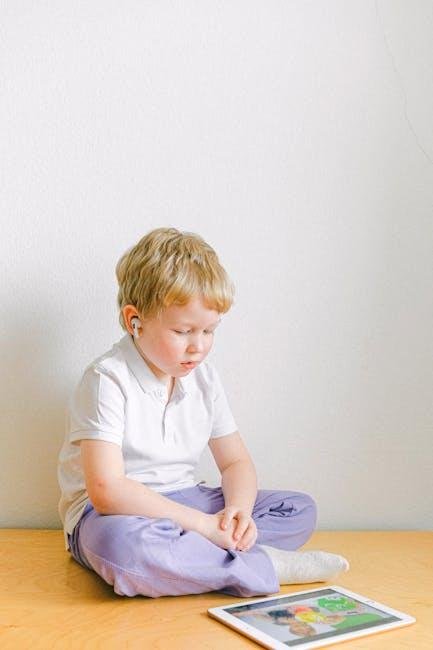Parenting is a beautiful journey filled with moments of joy, growth, and connection—but it can also bring its fair share of challenges. One common struggle many parents face is getting their child to listen calmly without raising their voice. Yelling might seem like the quickest way to grab attention, but it often leads to frustration for both you and your little one. In this article, we’ll explore gentle, effective strategies to foster peaceful communication and help your child respond with calm and focus. Together, we can create a more harmonious environment where listening becomes a natural part of your everyday interactions.
Table of Contents
- Understanding Your Child’s Listening Challenges with Empathy
- Creating a Calm Environment to Encourage Focused Attention
- Using Positive Language and Gentle Reminders to Foster Cooperation
- Building Routine Communication Habits That Promote Calm Listening
- Insights and Conclusions
Understanding Your Child’s Listening Challenges with Empathy
Children’s listening difficulties aren’t usually a matter of defiance or inattention—they often stem from deeper emotional or developmental factors that deserve understanding rather than frustration. When your little one seems to tune out or respond slowly, it could be their way of coping with feelings of overwhelm, anxiety, or sensory processing challenges. Instead of reacting with impatience, try to step into their world and acknowledge the invisible barriers they might be facing. Listening with empathy means validating their experience, showing that you recognize their struggle and are there to support them, not just correct their behavior.
Creating a calm and nurturing listening environment doesn’t have to be complicated. Simple adjustments can make a big difference and encourage your child to engage more openly:
- Lower your voice volume: A gentle tone invites calmness and reduces audible overwhelm.
- Maintain soft eye contact: This signals your full attention without feeling intimidating.
- Break instructions into small steps: Clear, manageable directions help reduce confusion.
- Give them space to process: Pauses are powerful in allowing children time to absorb what’s said.
By weaving compassion into your approach, you transform listening from a battleground into a bridge, making it easier for your child to feel heard—and to listen in kind.
Creating a Calm Environment to Encourage Focused Attention
Children often respond best when their surroundings feel safe and predictable. By gently minimizing distractions and creating a peaceful atmosphere, you invite your child to engage more fully and listen deeply. Consider designating a cozy corner with soft lighting and familiar items like a favorite stuffed animal or calming sensory toys. This quiet space becomes a sanctuary that quietly signals, “It’s time to slow down and pay attention.” Simple adjustments such as lowering background noise, turning off screens, and ensuring comfortable seating can soften the environment and make it easier for your child to stay calm and focused.
Establishing routines that involve calm activities before important conversations or transitions can help prepare your child’s mind and ease restless energy. Activities like deep breathing exercises, gentle stretching, or listening to soothing music create a supportive rhythm without overwhelming. To foster this nurturing vibe, try incorporating these elements:
- Soft, neutral colors: Walls and furnishings in muted tones reduce visual stimulation.
- Natural light: Sunlight enhances mood and attentiveness.
- Consistent rituals: Predictable cues, such as a calming chime or whispered reminder, anchor your child’s focus.
- Minimal clutter: Keeping the environment tidy helps minimize distractions and anxiety.
Using Positive Language and Gentle Reminders to Foster Cooperation
When guiding your little ones, the tone you choose can make all the difference in how they respond. Rather than issuing commands or expressing frustration, try embracing a language that is uplifting and encouraging. Words like “Let’s try this together,” or “Can you help me with this?” invite collaboration and make your child feel valued and respected. This gentle approach nurtures a sense of trust and openness, reducing resistance and promoting calm, cooperative behavior.
Alongside positive phrasing, gentle reminders act as thoughtful nudges that keep your child on track without sparking tension. Consider these subtle techniques:
- Soft prompts: Whisper a calm reminder close by instead of shouting across the room.
- Visual cues: Use colorful charts or pictures to reinforce routines and expectations.
- Consistent phrases: Repeat comforting reminders like “Remember to listen so we can have fun together,” to build familiarity.
These simple tools encourage your child to engage willingly and build positive habits while respecting their emotional space.
Building Routine Communication Habits That Promote Calm Listening
Creating a peaceful atmosphere where your child feels heard starts with consistent, gentle communication habits. Begin by setting aside regular moments each day to connect without distractions—this might be during mealtime or bedtime. Use soft tones and open body language to signal safety and attentiveness, showing your child that their voice matters. Encourage them to express themselves by asking open-ended questions and validating their feelings, which naturally invites calm listening instead of defensive reactions.
Incorporate simple rituals that promote patience and mindfulness, such as taking a few deep breaths together before responding or using a ‘listening signal’ like holding a soft toy. These small, intentional actions teach children that conversations are a two-way street based on respect and presence. Remember, modeling the behavior you want to see is powerful—demonstrate calm, thoughtful listening yourself, and your child will learn to mirror this peaceful communication rhythm effortlessly.
- Set consistent, distraction-free times for talking
- Use calming rituals like deep breathing together
- Model attentive and empathetic listening
Insights and Conclusions
Helping your child listen calmly without raising your voice is a journey that takes patience, understanding, and consistent effort. Remember, every parent faces moments of frustration, and it’s okay to acknowledge that. By fostering a calm environment, setting clear expectations, and practicing gentle communication, you’re not only encouraging better listening but also strengthening the trust and connection you share with your child. Keep in mind that change doesn’t happen overnight, but with kindness and perseverance, you’ll notice those peaceful moments growing more frequent. Here’s to more calm conversations and a deeper bond with your little one. You’ve got this!
Related Products
-
Sale!
Frida Mom 2-in-1 Postpartum Pads, Absorbent Perine…
Mom Original price was: $19.99.$15.19Current price is: $15.19. -
John Deere Bubble Lawn Mower for Toddlers, Bubble …
Kids $29.99 -
Hanes Men’s EcoSmart Fleece, Pullover Crewneck Swe…
Clothing $9.31







